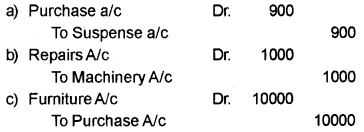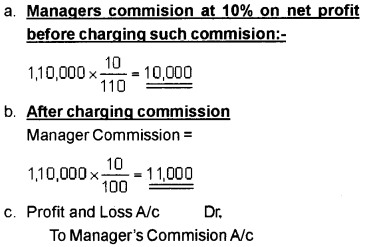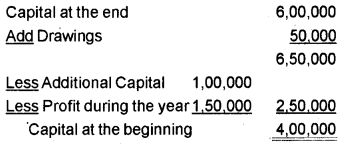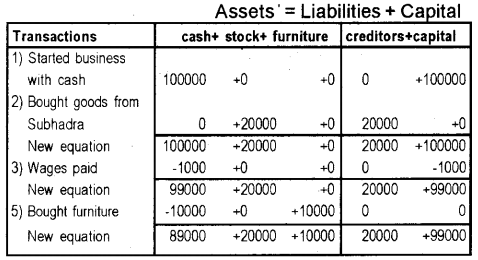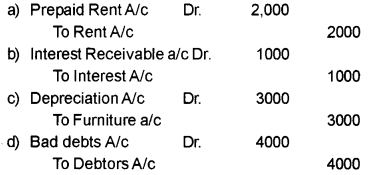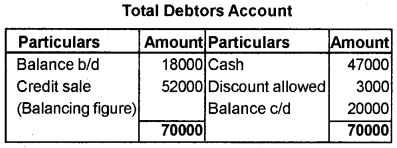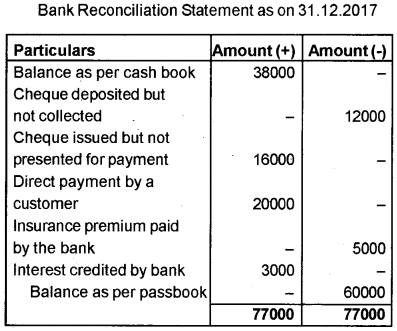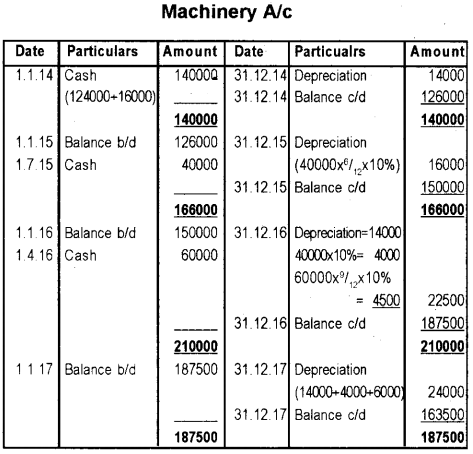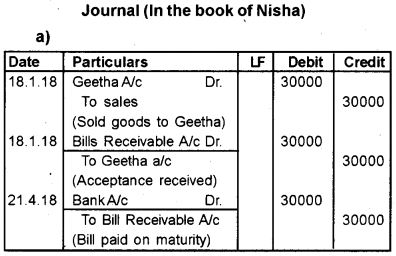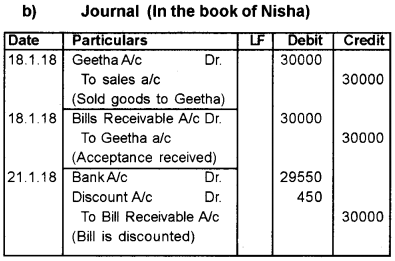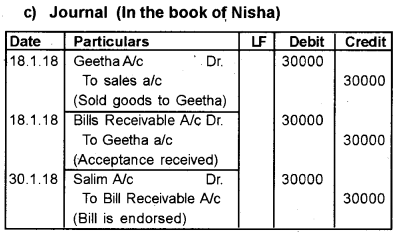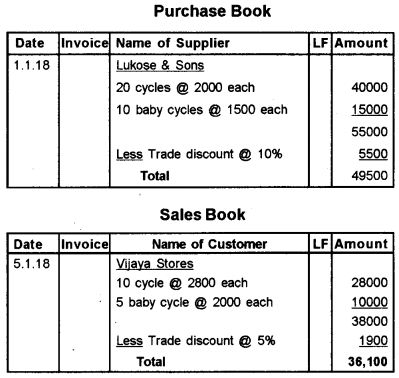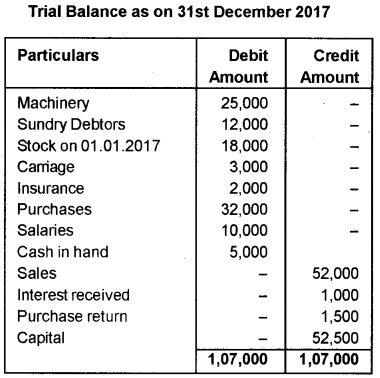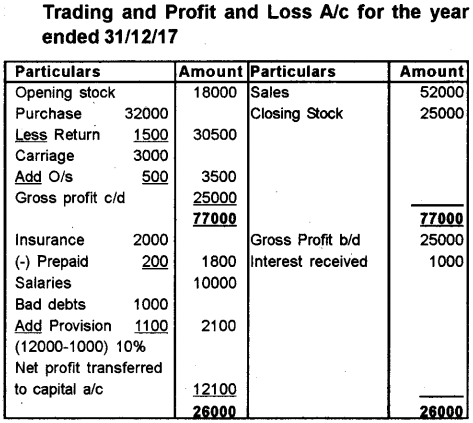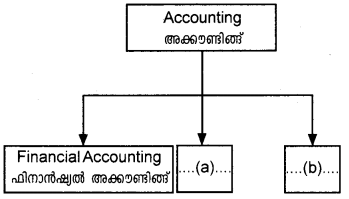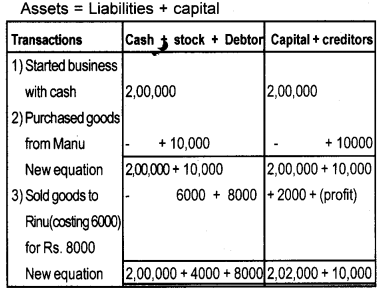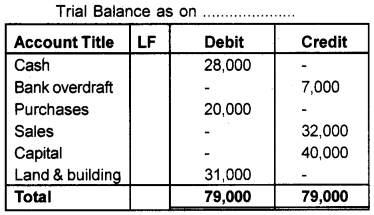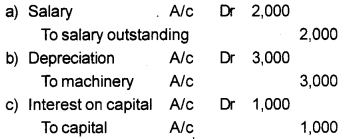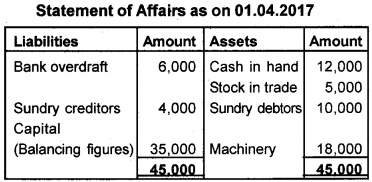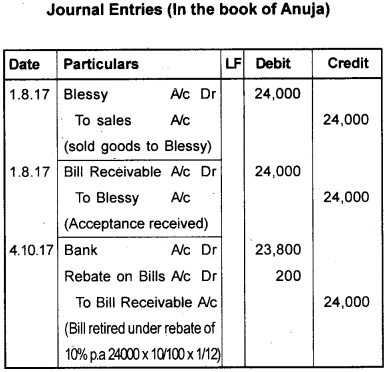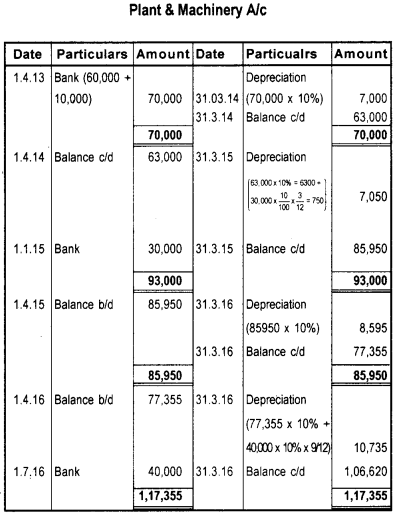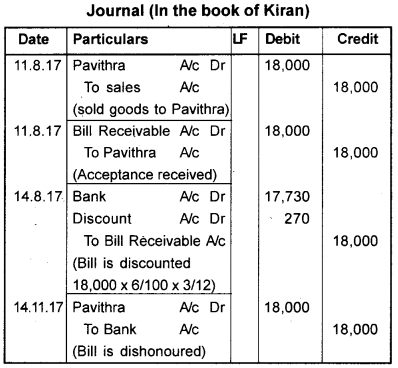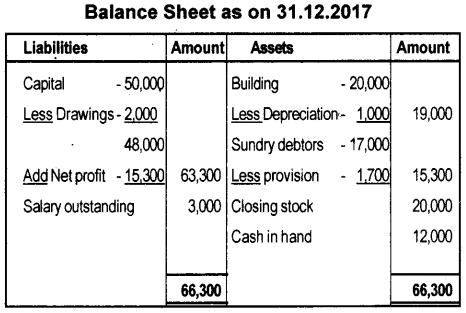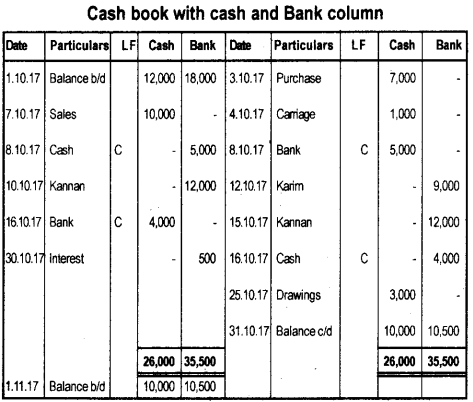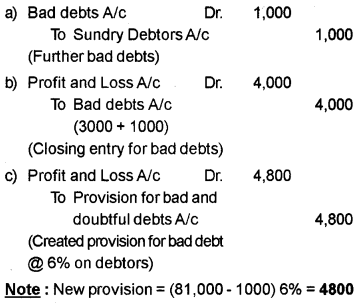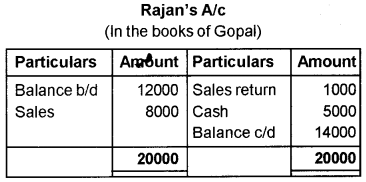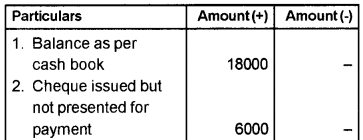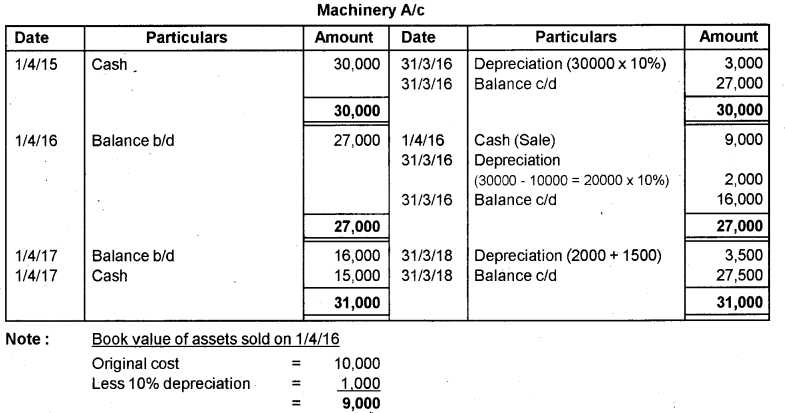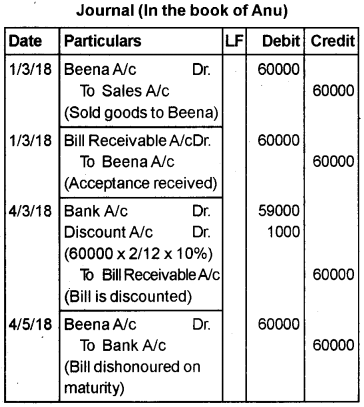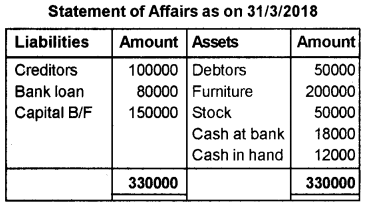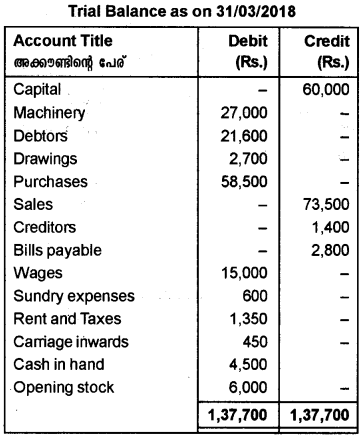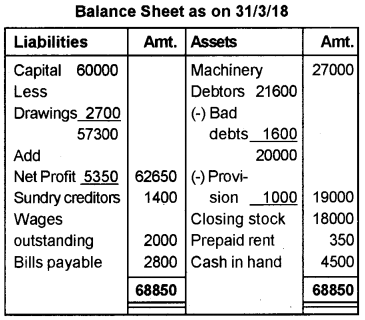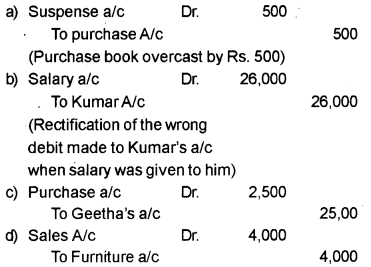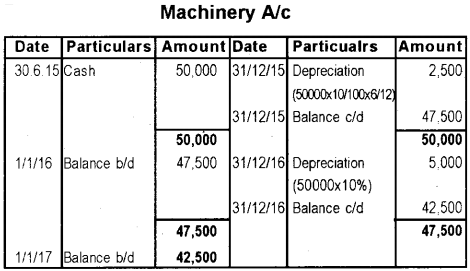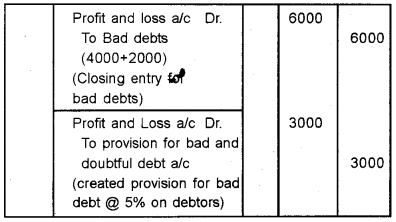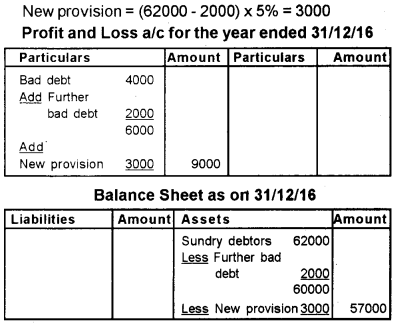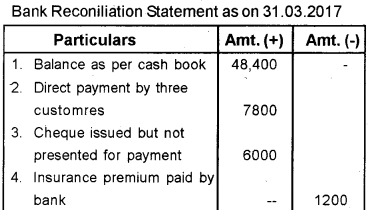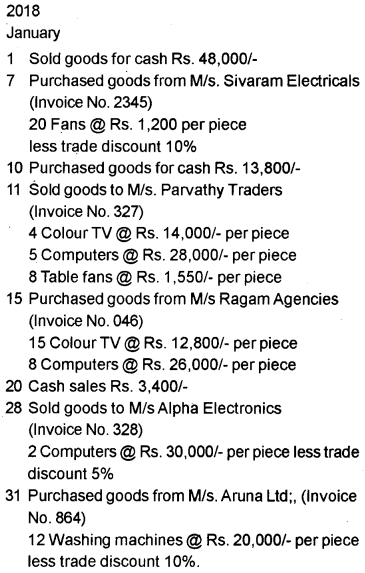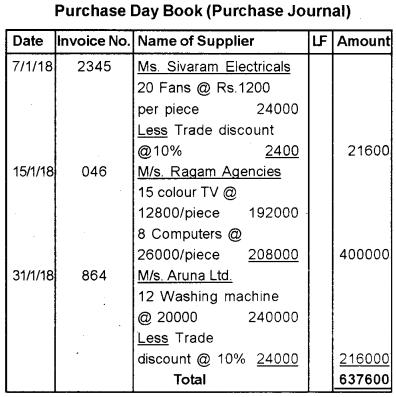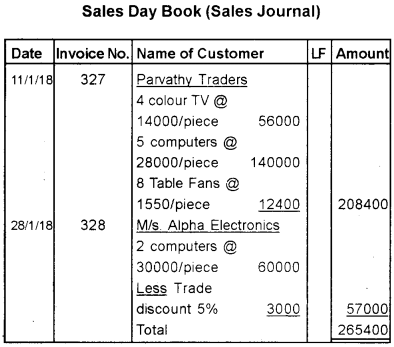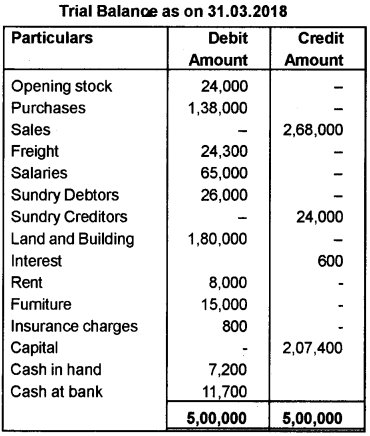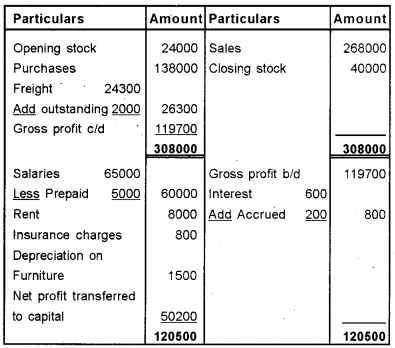Kerala Plus One Business Studies Previous Year Question Paper March 2019 with Answers
| Board | SCERT |
| Class | Plus One |
| Subject | Business Studies |
| Category | Plus One Previous Year Question Papers |
Time Allowed: 21/2 hours
Cool off time: 15 Minutes
Maximum Marks: 80
General Instructions to Candidates
- There is a ‘cool off time of 15 minutes in addition to the writing time.
- You are not allowed to write your answers nor to discuss anything with others during the ‘cool off time’.
- Use the ‘cool off time’ to get familiar with the questions and to plan your answers.
- Read questions carefully before you answering.
- All questions are compulsory and the only internal choice is allowed.
- When you select a question, all the sub-questions must be answered from the same question itself.
- Calculations, figures, and graphs should be shown in the answer sheet itself.
- Malayalam version of the questions is also provided.
- Give equations wherever necessary.
- Electronic devices except non-programmable calculators are not allowed in the Examination Hall.
Answer all questions from question numbers 1 to 9. Each carries one score. (9 × 1 = 9)
Question 1.
Which among the following is a ‘human cause’ of business risk?
a) Earthquake
b) Mismanagement
c) Change in demand
d) Competition in market
Answer:
b) Mismanagement
Question 2.
‘One man one vote’ is the principle of ………… form of business organisation.
a) Joint stock company
b) Partnership
c) Co-operative societies
d) Hindu joint family business
Answer:
c) Co-operative societies
Question 3.
Which among the following is an example of departmental undertaking?
a) LIC
b) RBI
c) Doordarshan
d) KSRTC
Answer:
c) Doordarshan
Question 4.
Give one example for ‘discretionary responsibility’ of business.
Answer:
Give donation to a charitable institution
Question 5.
Complete the series as per hint given.
a) Equity Shares – Owned Capital
b) Debentures – …………..?
Answer:
Borrowed capital / Debt capital
Question 6.
The only international non-governmental organization of micro, small and medium enterprises in India is ………..
a) NABARD
b) SIDBI
c) WASME
d) UTI
Answer:
c) WASME
Question 7.
Suggest two products which are suitable for dealing through vending machines.
Answer:
News paper, Softdrinks
Question 8.
Which among the following is a document relating to the payment in international business?
a) Shipping bill
b) Certificate of origin
c) Letter of credit
d) Export invoice
Answer:
c) Letter of credit
Question 9.
Find the odd one out:
a) Trade credit
b) Certificate of deposit
c) Bank overdraft
d) Plaughing back of profits
Answer:
d) Plaughing back of profits
Answer any six from questions from 10 to 16. Each carries two scores. (6 × 2 = 12)
Question 10.
What is franchising?
Answer:
Franchising is arrangement where one party grants another party the right to use its trademark, name or patent in return of agreed payment for specified period of time.
Question 11.
Who are cheap jacks?
Answer:
Cheap Jacks: They are small retailers who have independent shops of a temporary nature in a business locality. They keep on changing their business from one locality to another.
Question 12.
Distinguish between ADR and GDR.
Answer:
| ADR | GDR |
| 1. They issued and traded in USA. | 1. They issued and traded in European capital market. |
| 1. Both individual and institutional investors can make investment. | 2. Only institutional investors can make investment. |
Question 13.
Anu and Varghese are working in a business organization doing the same job. Anu is paid Rs. 500 per day, while Varghese is at 750. Is the act of management genuine? Why?
Answer:
a) No.
b) It is against business ethics and social responsibility of business.
Question 14.
Name any two types of payment machanisms used in e-Business transactions.
Answer:
- Cash on delivery
- Cheque
- Net banking
- Credit card/Debit Card
Question 15.
Bring out any two features of business services.
Answer:
Nature of Services:
- Intangibility: Services are intangible, i.e., they cannot be touched.
- Less Inventory: Services cannot be stored for future use.
- Involvement: participation of the customer in the service delivery is a must.
Question 16.
What do you mean by plaughing back of profits?
Answer:
Retained Earnings (Ploughing Back of Profit): A company generally does not distribute all its earnings amongst the shareholders as dividends. A portion of the net earnings may be retained in the business for use in the future. This is known as retained earnings. It is a source of internal financing or self financing or ‘ploughing back of profits’
Answer any four from questions numbers from 17 to 21. Each carries three scores. (4 × 3 = 12)
Question 17.
What do you mean by business risk? What is the reward of businessman for taking this risk?
Answer:
- The term ‘business risks’ refers to the possibility of inadequate profits or even losses due to uncertainties or unexpected events.
- Profit is the reward for taking business risks
Question 18.
Explain any three features of a statutory corporation.
Answer:
- Statutory corporations are set up under an Act of Parliament and are governed by the provisions of the Act.
- It has a separate legal entity
- The employees of these enterprises are not government or civil servants.
Question 19.
Write any three reasons for international business.
Answer:
Reasons for international business:
- Because of unequal distribution of natural resources and differences in productivity levels, a country cannot produce all that they need.
- Labour productivity and production costs differ among nations due to various socio-economic, geographical and political reasons.
- Availability of various factors of production such as labour, capital and raw materials differ among nations.
Question 20.
Write a short note on ‘District industrial Centres’ (DIC’s).
Answer:
The District Industries Centers (DICs): DICs were established in May 1978. District Industries Centers is the institution at the district level which provides all the services and support facilities to the entrepreneurs for setting up small and village industries.
Identification of suitable schemes, preparation of feasibility reports, arranging for credit, machinery and equipment, provision of raw materials and other extension services are the main activities undertaken by these centers.
Question 21.
Distinguish between public warehouses and bonded warehouses.
Answer:
Public warehouses: They are owned by some agencies, offer storage facilities to the public after charging certain fees. The working of public warehouses is subject to some govt, regulations. They are also known as Duty paid warehouses.
Bonded warehouses: These warehouses are used to keep the imported goods before the payment of import duties. It offers many advantages to the importer, i.e. The importer can release the goods in part by paying the proportionate amount of duty. The goods can be branded, blended and packed in the warehouse itself.
Answer any three questions from 22 to 25. Each carries four scores. (3 × 4 = 12)
Question 22.
Write short notes on the following:
a) H.U.F. (Hindu Undivided Family Business)
b) Partnership deed
Answer:
a) Joint Hindu Family Business (HUF):
It refers to a form of organisation where in the business is owned and carried on by the members of a joint Hindu family. It is also known as Hindu Undivided Family Business (H.U.F). It is governed by Hindu succession Act, 1956. It is found only in India.
The business is controlled by the head of the family who is the eldest member and is called karta. All members have equal ownership right over the property of an ancestor and they are known as co-parceners.
b) Partnership Deed:
The written agreement which specifies the terms and conditions that govern the partnership is called the partnership deed.
Contents:
- Name of firm
- Nature of business and location of business
- Duration of business
- Investment made by each partner
- Profit sharing ratio
- Rights, duties and powers of the partners
Question 23.
Who is a promotor? Describe any two of his functions in relation with the formation of a company.
Answer:
a) The person who undertakes to form a company is called promoter.
Functions of a promoter:
- Identification of business opportunity: The first and foremost activity of a promoter is to identify a business opportunity.
- Feasibility studies: After identifying a business opportunity, the promoters undertake some feasibility studies to determine the viability and profitability of the proposed activity.
- Name approval: After selecting the name of company the promoters submit an application to the Registrar of companies for its approval. The selected name is not the same or identical to an existing company.
Question 24.
Write any four differences between a share and a debenture.
Answer:
| Shares | Debentures |
| 1. Shareholders are the owners of the company | 1. Debenture holders are the creditors of the company |
| 2. Shareholders get dividends | 2. Debenture holders get interest |
| 3. Shareholders have voting right | 3. Debenture holders have no voting right |
| 4. No security is required to issue shares | 4. Generally debentures are secured |
Question 25.
Illustrate any four major problems faced by small business in India.
Answer:
Problems of small business:
Small businesses are faced with the following problems
- Small scale industries find it difficult to get adequate finance from banks and other financial institutions.
- They are not able to get quality raw materials at reasonable prices.
- Small business is generally operated by people who may not have all the managerial skills required to run the business.
- Small business firms cannot afford to pay higher salaries to the employees.
Question 26.
Match the following: (4 × 1 = 4)
| A | B |
| a) Milka bakery ordered 1000 packets of bread from Vimala bread company through online | B2G |
| b) The manager of Milka bakery bought a mobile phone through Flipkart | B2E |
| c) Milka bakery pays their employees salary through their bank accounts | B2B |
| d) Milka bakery paid their taxes through online | B2C |
Answer:
| A | B |
| a) Milka bakery ordered 1000 packets of bread from Vimala bread company through online | B2B |
| b) The manager of Milka bakery bought a mobile phone through Flipkart | B2C |
| c) Milka bakery pays their employees salary through their bank accounts | B2E |
| d) Milka bakery paid their taxes through online | B2G |
Answer any three questions from 27 to 30. Each carries five scores. (3 × 5 = 15)
Question 27.
Describe the importance of profit in business.
Answer:
Merits:
- It is a permanent source of funds available to an organization
- No costs in the form of interest, dividend or flotation cost.
- It is more dependable than external sources.
- There is no commitment to pay dividend.
- It increases the financial strength and earning capacity of the business.
Question 28.
Explain the features of a ‘global enterprise’.
Answer:
Features of MNCs:
1. Huge capital resources: Multinational companies have the ability to raise huge funds from different sources such as equity shares, debentures, bonds, etc. They can also borrow from financial institutions and international banks.
2. Foreign collaboration: Global enterprises usually enter into agreements relating to the sale of technology, production of goods, use of brand name, etc. with local firms in the host countries.
3. Advanced technology: Multinational companies can possess latest and advanced technology so that they can provide quality products.
4. Product innovation: Multinational companies are able to conduct sophisticated research so that they can develop new products.
5. Marketing strategies: They use aggressive marketing strategies in order to increase their sales in a short period. Their advertising and sales promotion techniques are normally very effective.
Question 29.
This document is called as the charter or constitution of a ‘Joint Stock Company’.
a) Identify the document.
b) Explain its contents.
Answer:
Memorandum of Association: It is the charter or Magna Carta of the company. It defines the objects of the company and provides the framework beyond which the company cannot operate. It lays down the relationship of the company with outside world. Memorandum of Association must be printed, divided into paragraphs, numbered consecutively. The Memorandum of Association must be signed by at least seven persons in case of a public company and by two persons in case of a private company.
1. The name clause: Under this clause the name of the company is mentioned. A company can select any name subject to the following restrictions.
- The proposed name should not be identical with the name of another company
- A name which can mislead the public
- Incase of a public company the name should end with the word ‘Limited’ and in case of a private company the name should end with the word ‘Private Limited’
2. Registered office clause: This clause contains the name of the state, in which the registered office of the company is proposed to be situated.
3. Objects clause: This is the most important clause of the memorandum. It defines the purpose for which the company is formed.
4. Liability clause: It states that the liability of members is limited to the face value of shares held by them or the amount guaranteed to be paid on winding up.
5. Capital clause: This clause specifies the maximum capital which the company will be authorised to raise through the issue of shares.
Question 30.
Write how the business impart their responsibility to the following interest groups, (one each)
a) Customers
b) Government
c) Suppliers
d) General public
e) Owners
Answer:
- Responsibility toward consumers: Supply right quality and quantity of goods and services at reasonable prices.
- Responsibility Towards Government: Pay taxes regularly and honestly.
- Suppliers: Make payments in time
- General Public: Make employment opportunities
- Responsibility towards shareholders or owners: To ensure the safety of their investment.
Answer any two questions from 31 to 33. Each carries eight scores. (2 × 8 = 16)
Question 31.
Jisha and Lekha jointly start a business on the basis of an agreement. They contributed capital and sharing risks, engaged in business jointly and severally.
a) Identify the form of business organization mentioned above.
b) Describe any four merits and three demerits of it.
Answer:
Partnership: The Indian Partnership Act, 1932 defines partnership as “the relation between persons who have agreed to share the profit of the business carried on by all or
any one of them acting for all.”
Merits of Partnership:
- Easy formation and closure: A partnership firm can be formed and closed easily without any legal formalities.
- Balanced decision making: In partnership, decisions are taken by all partners. So they can take better decisions regarding their business.
- Division of labour: Division of labour is possible in partnership firm. Duties can be assigned to different partners according to their ability.
- Large funds: In a partnership, the capital is contributed by a number of partners. So they can start business on a large scale.
Limitations of Partnership:
- Unlimited liability: The partners of a firm have unlimited liability. The partners are jointly and individually liable for payment of debts.
- Limited resources: There is a restriction on the number of partners. Hence capital contributed by them is also limited.
- Possibility of conflicts: Lack of mutual understanding and co-operation among partners may affect the smooth working of the partnership business.
Question 32.
‘Super market is a large retailing business unit dealing consumer goods’.
a) Describe its features.
b) List any four of its merits and demerits.
Answer:
Features of Super Market:
- They are located at the centre of a town.
- They sell goods on cash basis only.
- They deal wide variety of goods.
- There is no salesman to help consumers
Advantages:
- Consumers can purchase everything from supermarket
- There is no bad debt as sales are on cash basis only.
- They are located at the centre of a town.
- It attracts a large number of consumers.
Disadvantages:
- Large premises at central location is not available easily.
- It lacks personal advice of salesman
- They do not provide credit facilities to customers.
- The employees in a supermarket do not take initiative to increase sales.
Question 33.
Explain the following principles of Insurance.
a) Causa proxima
b) Utmost good faith
c) Mitigation of loss
d) Contribution
Answer:
a) Causa Proxima: When the loss is the result of two or more causes, the proximate cause for the loss alone will be considered by the insurance company for admitting the claim.
b) Utmost good faith: The insured must disclose all material facts about the subject matter to the insured. Otherwise the insurer can cancel the contract. The insurer must disclose all the terms and conditions in the insurance contract to the insured.
c) Mitigation of loss: This principle states that it is the duty of the insured to take reasonable steps to minimize the loss or damage to the insured property. If reasonable care is not taken then the claim from the insurance company may be rejected.
d) Contribution: In certain cases, the same subject matter is insured with one or more insurers. In case there is a loss, the insured is eligible to receive a claim only up to the amount of actual loss suffered by him.




